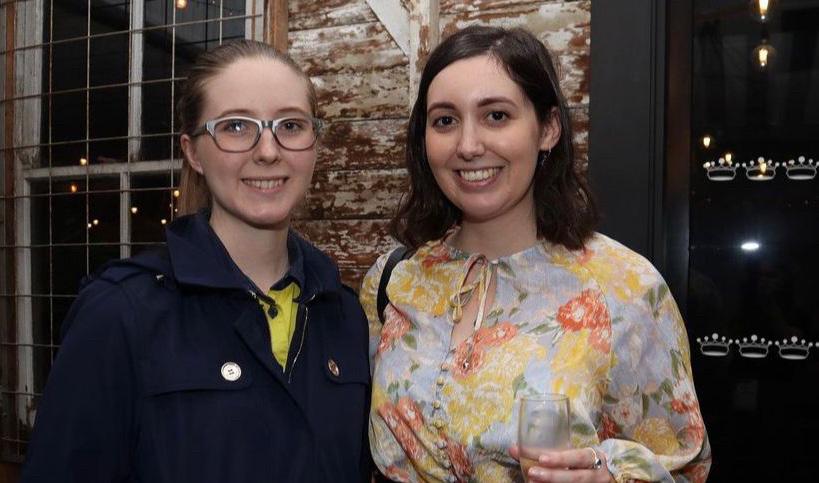
4 minute read
Recollections of the Early Production of the Standard Drawings
John Derbyshire
I recently found my copy of the first set of Standard Drawings produced by the Local Government Engineers Association of Queensland (LGEAQ). I gave them to Leigh Cunningham and she asked if I could write a brief history on their production to coincide with the release of the revised IPWEAQ Standard Drawing set. (The LGEAQ changed its name to IMEAQ in about 1990 and it is now the IPWEAQ.)
The idea of achieving standardisation across local governments in Queensland was first conceived within an organization called the South East Queensland Local Government Engineers and Overseas Association (SEQLGEOA). This organisation fell under the umbrella of a group of SEQ Council Mayors and Chairpersons who met a couple of times a year to discuss matters of mutual interest. My involvement with that group commenced in 1978.
One area of particular concern at the time was the multitude of different stormwater catchpits being used throughout SEQ and indeed throughout Queensland generally. A review of the 17 SEQ local authorities at the time, showed virtually no designs being the same for the humble catchpit. This was the catalyst for a move to explore standardisation which then also embraced the desirability in having standard design guidelines for all roadworks and stormwater drainage, as well as potentially development standards for new subdivisions and the like. A small group of local government engineers started to meet on a regular basis to produce road and stormwater design standards in mostly their own time. Some of the engineers who were involved that stage were Terry Mallon, Chris Lawson, Clive Jenkins, Nev Gibson, Bob Taylor, Dennis Yardley and myself (apologies to those I have forgotten).
In the mid-1980s, Peter Way and Phil Hennessey who had been involved with the SEQLGEOA became members of the LGEAQ board. They saw the difficulty in being able to produce the road and drainage standards in a relatively short period by a small group of engineers who were extremely busy with their official duties. They recognized the need for more structure to be put around the production of the road and drainage standards and to find funding to pay consultants to produce these documents.
With the release of the first edition of the Australian Model Code for Residential Development (AMCORD) in 1987, practitioners were looking for supporting detailed planning and design guidelines for use by practitioners within the development industry and Councils. Peter and Phil were able to find funds from a couple of SEQ local governments and a state government department to finance the production of Queensland Streets and QUDM. Clive Jenkins, who had left local government to become a consultant, was asked to produce Queensland Streets. The consulting engineering practice owned by the late Neville Jones together with Chris Lawson (who had also left local government) produced the first version of QUDM.
Peter Way also saw the desirability of standardising a range of drawings for use across local governments and was keen to have these as part of the standardisation program. I was asked to facilitate the production of those drawings which I did on a voluntary basis, including taking recreational leave to meet targeted timeframes. Employment program funds were obtained to employ a drafter, who worked at the then Redland Shire Council. The drawings were produced within the Council and released in the late 80's.
At the same time the Department of Local Government had a set of standard drawings for water supply and sewerage infrastructure and jealously guarded their right to control their production. However, they were not being actively updated to represent changes to industry practice. With local governments being responsible for water supply and sewerage in that era, it was decided that water supply and sewerage infrastructure should form part of the LGEAQ drawing set.
Standardisation of stormwater catchpit designs was considered a priority, yet it was very difficult to achieve consensus across local government and the manufacturing sector. Ron Gottlieb at Humes Concrete worked closely with Chris Lawson and me to come up with a
precast solution. All of us had worked previously at Townsville and saw merit in some aspects of the standard side-inlet catchpit that the Townsville City Council had been using for many years. Also at Humes was a young engineer, Gunter Nehring, who came up with an innovative design for a hinge for the grate. It was patented by Humes and an agreement was reached with the LGEAQ for Humes to license other manufacturers to use the hinge design, with the money received being given to the LGEAQ for the purposes of stormwater research. The outcome was a standard design of the LGEAQ Stormwater Inlet Manhole, also marketed as Drainway. Full scale hydraulic testing of the system was undertaken by Professor John Argue in Adelaide.
The first set of drawings allowed Councils and consulting engineers to include their names in the title block. A condition of use was that changes within the drawing itself and the issue versions were not permitted. Otherwise, the whole point of the standardisation would be lost.
The standard drawings were produced in the days that design offices were just starting to use computers and were produced as paper versions. A few years after the initial production, the IMEAQ (previously LGEAQ) engaged a consultant to update the set of standard drawings using the latest CAD systems under the direction of a steering committee. Revisions and additions have since occurred on an ongoing basis, which has led to the current release.
The standardisation work undertaken by the IPWEAQ and its members has achieved considerable cost savings for the community for many years and will continue to do so into the future.







